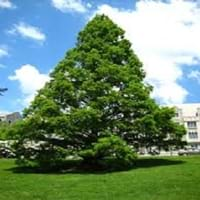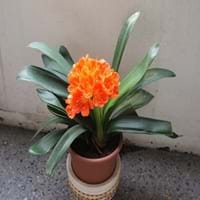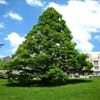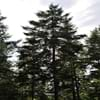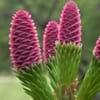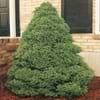Life Span
Perennial
Perennial
Type
Needled or Scaled Evergreen
Bulb or Corm or Tuber
Origin
China
South Africa
Types
Not available
Not Available
Habitat
Deciduous forests, Mixed deciduous forest
Temperate Regions, Woodlands
USDA Hardiness Zone
5-9
9-11
Sunset Zone
A3, 3a, 3b, 4, 5, 6, 7, 8, 9, 10, 14, 15, 16, 17, 18, 19, 20, 21, 22, 23, 24
21,22
Habit
Pyramidal
Clump-Forming
Flower Color
Green, Light Green
Yellow, Red, Orange
Flower Color Modifier
Bicolor
Bicolor
Leaf Color in Spring
Light Green
Dark Green
Leaf Color in Summer
Green, Light Green
Light Green
Leaf Color in Fall
Orange, Bronze
Several shades of Green
Leaf Color in Winter
Not Available
Light Green
Leaf Shape
Alternate
Long Linear
Plant Season
Spring, Summer, Fall, Winter
Spring, Winter
Sunlight
Full Sun
Partial shade, Full Shade
Type of Soil
Clay, Loam
Loam, Sand
The pH of Soil
Acidic, Neutral
Acidic, Neutral
Soil Drainage
Average
Well drained
Bloom Time
Indeterminate
Early Spring, Spring, Late Spring, Winter, Late Winter
Tolerances
Drought
Drought
Where to Plant?
Ground
Container, Ground
How to Plant?
Seedlings
Seedlings, Transplanting
Plant Maintenance
Medium
Medium
Watering Requirements
Needs small amount of water
Water more in summer
In Summer
Lots of watering
Lots of watering
In Spring
Moderate
Moderate
In Winter
Average Water
Average Water
Soil pH
Acidic, Neutral
Acidic, Neutral
Soil Type
Clay, Loam
Loam, Sand
Soil Drainage Capacity
Average
Well drained
Sun Exposure
Full Sun
Partial shade, Full Shade
Pruning
Prune if you want to improve plant shape, Remove damaged leaves, Remove dead branches, Remove dead leaves
Remove damaged leaves, Remove dead branches, Remove dead leaves
Fertilizers
All-Purpose Liquid Fertilizer, Compost
fertilize in growing season
Pests and Diseases
Dry root rot, Free of serious pests and diseases, fungus
Red blotch
Plant Tolerance
Deer resistant, Drought
Drought
Flowers
Insignificant
Showy
Flower Petal Number
Single
Single
Foliage Texture
Fine
Coarse
Foliage Sheen
Glossy
Glossy
Attracts
Birds, Squirrels
Insects
Allergy
Pollen
Asthma, breathing problems, Itchiness
Aesthetic Uses
along a porch, deck or patio, Beautification, Landscape Designing, Showy Purposes, Wild gardens
Beautification, Landscape Designing, Showy Purposes, Used for decorating walls, fences, gates, hedges, etc.
Beauty Benefits
Not Available
Not Available
Environmental Uses
Air purification
Air purification, Food for insects, Prevent Soil Erosion
Medicinal Uses
Unknown
No Medicinal Use
Part of Plant Used
Not Available
Flowers
Other Uses
deer resistant, Shelterbelt, Showy Purposes
Decoration Purposes, Showy Purposes, Used as Ornamental plant
Used As Indoor Plant
No
Yes
Used As Outdoor Plant
Yes
Yes
Garden Design
Feature Plant, Shade Trees, Street Trees
Container, Feature Plant, Foundation, Houseplant, Mixed Border
Botanical Name
METASEQUOIA glyptostroboides
CLIVIA miniata
Common Name
dawn redwood
Clivia
In Hindi
dawn redwood
Clivia
In German
Urweltmammutbaum
Clivia
In French
aube séquoia
Clivia
In Spanish
metasecuoya
Clivia
In Greek
dawn redwood
κλίβια
In Portuguese
amanhecer Redwood
Clivia
In Polish
świt sekwoja
Clivia
In Latin
dawn redwood
Clivia
Phylum
Pinophyta
Magnoliophyta
Class
Pinopsida
Liliopsida
Order
Pinales
Asparagales
Family
Cupressaceae
Liliaceae
Clade
Not Available
Angiosperms, Monocots
Tribe
Not Available
Not Available
Subfamily
Sequoioideae
Amaryllidoideae
Number of Species
Not Available
Not Available
Season and Care of Dawn Redwood and Clivia
Season and care of Dawn Redwood and Clivia is important to know. While considering everything about Dawn Redwood and Clivia Care, growing season is an essential factor. Dawn Redwood season is Spring, Summer, Fall and Winter and Clivia season is Spring, Summer, Fall and Winter. The type of soil for Dawn Redwood is Clay, Loam and for Clivia is Loam, Sand while the PH of soil for Dawn Redwood is Acidic, Neutral and for Clivia is Acidic, Neutral.
Dawn Redwood and Clivia Physical Information
Dawn Redwood and Clivia physical information is very important for comparison. Dawn Redwood height is 2,130.00 cm and width 610.00 cm whereas Clivia height is 30.50 cm and width 25.40 cm. The color specification of Dawn Redwood and Clivia are as follows:
Dawn Redwood flower color: Green, Light Green
Dawn Redwood leaf color: Light Green
Clivia flower color: Yellow, Red and Orange
- Clivia leaf color: Dark Green
Care of Dawn Redwood and Clivia
Care of Dawn Redwood and Clivia include pruning, fertilizers, watering etc. Dawn Redwood pruning is done Prune if you want to improve plant shape, Remove damaged leaves, Remove dead branches and Remove dead leaves and Clivia pruning is done Remove damaged leaves, Remove dead branches and Remove dead leaves. In summer Dawn Redwood needs Lots of watering and in winter, it needs Average Water. Whereas, in summer Clivia needs Lots of watering and in winter, it needs Average Water.
